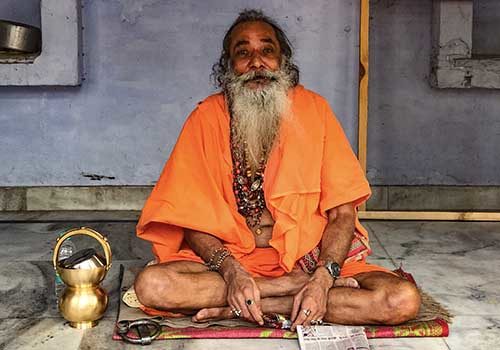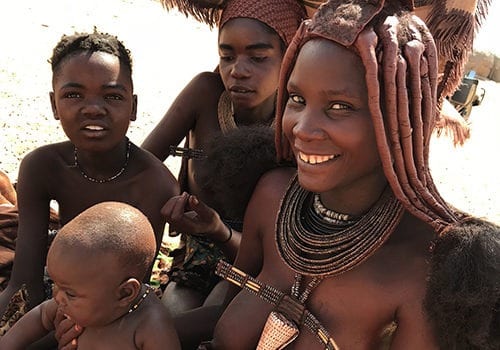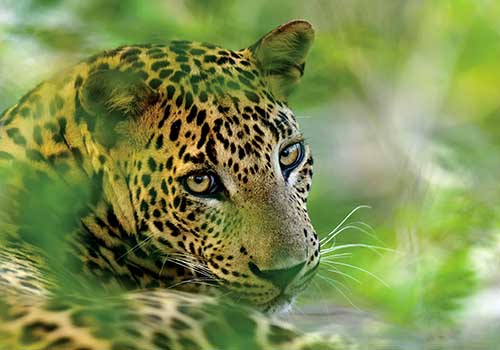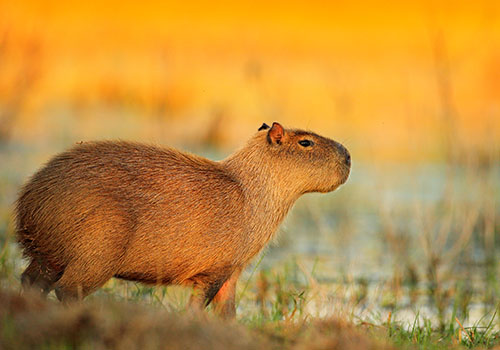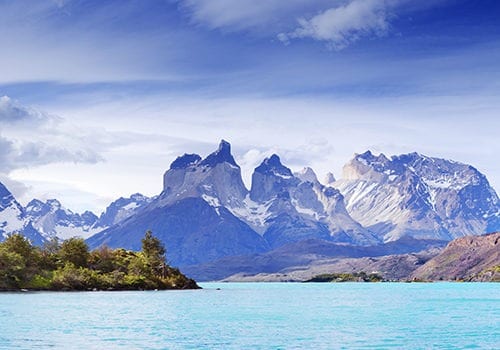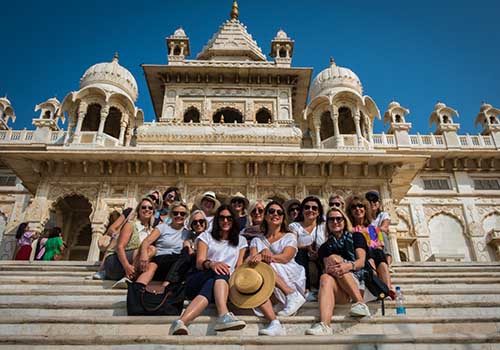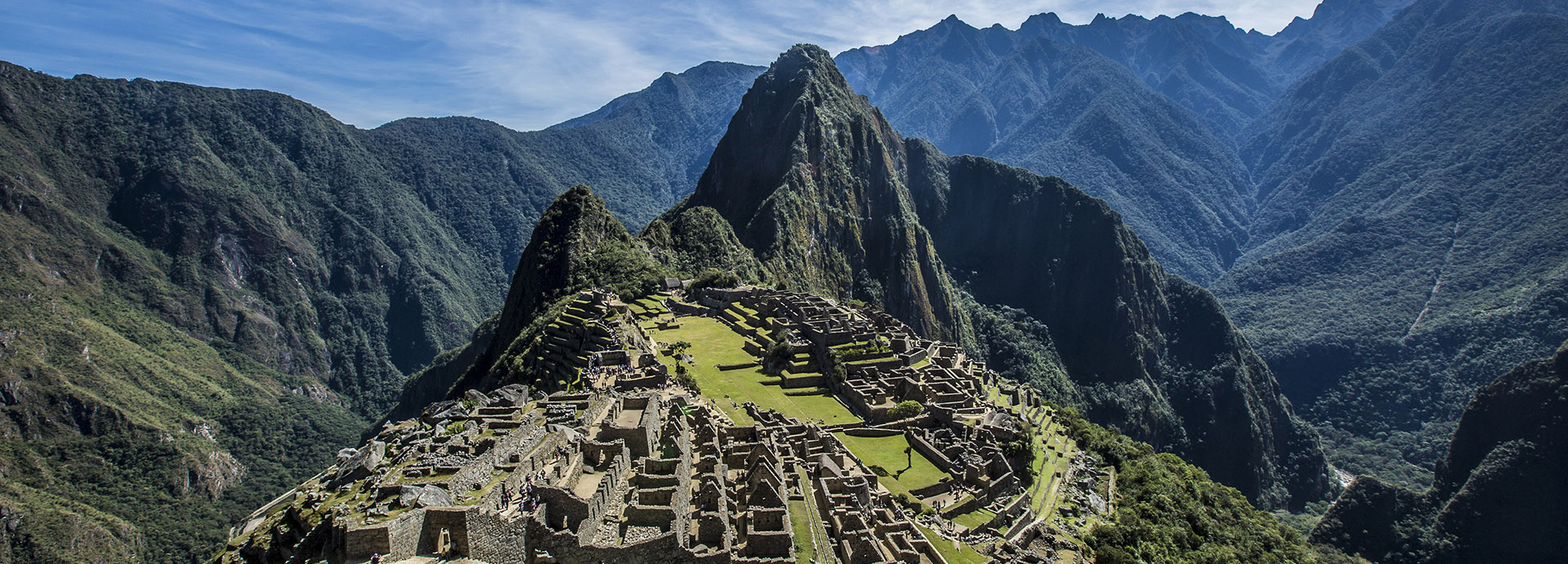
KEY INFORMATION TO PREPARE FOR YOUR JOURNEY
Peru, located on the western coast of South America, is a country renowned for its diverse landscapes and rich cultural heritage. Nestled between Ecuador, Colombia, Brazil, Bolivia, and Chile, Peru offers a captivating blend of attractions. From the awe-inspiring Machu Picchu, an ancient Inca citadel perched in the Andes, to the historic city of Cusco, the Amazon Rainforest teeming with wildlife, and the mysterious Nazca Lines etched in the desert, Peru beckons travellers with its natural wonders and archaeological treasures, making it a top destination for adventure and cultural enthusiasts alike.
PLEASE NOTE: All pre-departure information was correct at the time of writing, but should be used as a guide only since requirements can change at short notice and without warning. Consult Smart Traveller or contact the Embassy of the Republic of Peru or the appropriate authority prior to departure to confirm all details.
AT A GLANCE
PERU KEY FACTS
Time: GMT – 5 hours | AEST -15 hours
Capital: Lima
International Airport(s): Jorge Chávez International Airport (LIM) in Lima
Official languages: Spanish is the official language. English is spoken in the cities and most tourist areas. Quechua and Aymara are also official languages
Religion: The predominant religion in Peru is Christianity, specifically Roman Catholic
Electrical Current: 220 volts | Adaptor types A, B & C with round or flat, two-pin plugs
Currency: Peruvian Sol | PEN
Australian Embassy Lima: Av. La Paz 1049, 15074 Miraflores, Lima, Peru | T: (+51) 1 630 0500 | https://peru.embassy.gov.au/
Visa: No – Australian and New Zealand nationals do not require a visa for stays of up to 90 days.
USEFUL WEBSITES
Smart Traveller – https://www.smartraveller.gov.au/destinations/americas/peru
Travel Doctor-TMVC – https://www.traveldoctor.com.au/destinations/peru
Embassy of Peru in Canberra – http://www.embaperu.org.au
PUBLIC HOLIDAYS
January 1: New Year’s Day
Thursday before Easter: Maundy Thursday
Friday before Easter: Good Friday
Monday after Easter: Easter Monday
May 1: Labour Day
June 7: Flag Day
June 29: Saints Peter & Paul
July 23: Air Force Day
July 28-29: Independence Day
August 6: Battle of Junin
August 30: Santa Rosa de Lima
October 8: Battle of Angamos
November 1: All Saints’ Day
December 8: Immaculate Conception
December 9: Battle of Ayacucho
December 25: Christmas Day

PASSPORT & VISA REQUIREMENTS
PASSPORTS
Your passport must be valid for at least six months after your return to Australia and have at least two blank pages for every entry and country you intend to visit on your journey. If your passport does not meet these requirements you must obtain a new one. The Australian Passport Office website is www.passports.gov.au.
It is a wise precaution to carry a photocopy of your passport separately and leave a copy at home. This will aid authorities in processing a new passport should yours get stolen or lost.
If you have dual citizenship and more than one passport, we strongly recommend that you use only one of these during your travels, as in some countries it is considered illegal to have two or more passports. Be sure to use the same passport on entry and exit from a country, and never surrender your passport.
If your passport name is different to your commonly used name, advise us of this and ensure your airline reservations match those of your passport name.
VISAS
Australian and New Zealand passport holders do not require a visa to enter Peru.
Visa-free entry for Australian & New Zealand Passport holders is valid for a maximum duration stay of three months (90 days) from your date of entry.
DOCUMENTATION
A Tourist Information Card may need to be filled in upon arrival and handed to immigration. Please keep the copy they give you since it can be requested when leaving the country.
CLIMATE, WEATHER & SEASONS
CLIMATE
The central and southern region of the Peruvian coast is generally sunny in the summer November to May and cloudy during the rest of the year.
The northern region of the coast has sunshine almost all year with some rain between November and March, depending on the seasonal presence of the “El Niño” current in the north.
The Andes have usually a rainless winter that runs from April to October, where temperatures during the day are very warm, and a rainy season that lasts from November to March, being heaviest in January and February.
In the highlands temperatures have accentuated variations between day and night, with sudden temperature falls after sunset (sometimes up to 15ºC).
In the Rainforest it can rain all year round and there may be high temperatures. From November to May rain is heavier, rivers rise, but from May to September temperatures are generally milder but never cold, except sometimes in Madre de Dios (south) where cold air-masses move in from Bolivia and Argentina in the winter months and you may need to wear a light jacket/sweater.
KEY SEASONS
- May to September: Dry season – Ideal for visiting highland areas, including Machu Picchu and Cusco. Lower chances of rain providing clear skies and pleasant temperatures. This is high tourist season, so popular sites may be crowded
- October to April: Wet season – Suitable for those interested in the lush green landscapes of the highlands. May encounter rain showers, especially in January and February. The Amazon rainforest is more accessible due to swollen rivers, but heavy rainfall may impact travel plans. Coastal areas experience milder temperatures, with occasional drizzle

| LIMA | JAN | FEB | MAR | APR | MAY | JUN | JUL | AUG | SEP | OCT | NOV | DEC |
|---|---|---|---|---|---|---|---|---|---|---|---|---|
| Temperature (°C) | 20-26 | 21-27 | 21-27 | 19-24 | 17-22 | 16-21 | 16-19 | 16-19 | 15-19 | 16-21 | 17-22 | 19-24 |
| Rainfall (mm) | 5 | 0 | 0 | 0 | 5 | 10 | 10 | 10 | 10 | 5 | 5 | 0 |
| CUSCO | JAN | FEB | MAR | APR | MAY | JUN | JUL | AUG | SEP | OCT | NOV | DEC |
|---|---|---|---|---|---|---|---|---|---|---|---|---|
| Temperature (°C) | 6-18 | 6-18 | 6-19 | 5-19 | 2-19 | 0-19 | 2-19 | 0-19 | 4-20 | 5-21 | 6-21 | 6-21 |
| Rainfall (mm) | 160 | 130 | 110 | 45 | 10 | 5 | 5 | 10 | 25 | 50 | 80 | 120 |
| PUERTO MALDONADO | JAN | FEB | MAR | APR | MAY | JUN | JUL | AUG | SEP | OCT | NOV | DEC |
|---|---|---|---|---|---|---|---|---|---|---|---|---|
| Temperature (°C) | 21-31 | 21-31 | 21-31 | 20-31 | 18-29 | 17-29 | 17-29 | 18-31 | 18-32 | 20-32 | 21-31 | 21-31 |
| Rainfall (mm) | 340 | 330 | 280 | 155 | 105 | 60 | 55 | 65 | 100 | 165 | 240 | 280 |
LUGGAGE & PACKING
CLOTHING
Lightweight clothing is advisable in the summer, with warm clothing for the winter. It is also necessary for the evenings if staying in Cusco or Machu Picchu. Generally layers of clothing are recommended so that you can take off or add on as the day warms up/cools down.
Waterproof jacket if visiting the Amazonia during rainy season (Nov – May), and swimming costume all year.
Hat/cap and gloves in winter months (May – Sept).
If you are on a trek during your time in Peru some other packing essentials you might want to include, especially if your trek is camping based, are: tissues, compact quick-dry towel, head torch, insect repellent, suitable sleeping bag (this can be hired locally), walking poles (these can be hired locally), a down jacket and rain poncho.


HEALTH & VACCINATIONS
HEALTH & VACCINATIONS
It may be necessary to take medical precaution prior to, and whilst travelling. As we are not qualified to offer advice, we recommend you contact your GP or the Travel Doctor-TMVC who have the most up‐to-date information available and can tailor their advice to your specific needs. Requirements are highly personal depending on your health profile and the activities in your itinerary.
Some vaccinations must be given well in advance of travel, so we suggest seeking medical advice as soon as you start to plan your trip. Be sure to ask what vaccinations or medications may be required to enter Peru and to re-enter Australia.
You can also refer to SmartTraveller for a guide as to what may be required, however you should always seek professional medical advice before travelling.
FOOD & DRINK
- Drink boiled water or bottled water with sealed lids and avoid ice cubes, except in lodges and hotels where water quality is tested and assured.
- If in doubt, avoid raw and undercooked food, such as salads, as well as dairy products which are often unpasteurized. Gastrointestinal diseases are more common during the rainy season.

GENERAL RECOMMENDATIONS
For all insect-borne diseases the best advice is to cover up – use insect repellent, mosquito nets and wear long, loose, light-coloured clothing
YELLOW FEVER: Those entering the country from an infected area require a yellow fever certificate, and as outbreaks of yellow fever do occur; vaccination is recommended but is not necessary for Lima, Cuzco or Machu Picchu. It is only required by Australian authorities if you plan to visit Peru in the last six days prior to your date of return to Australia.
ZIKA VIRUS: Zika virus is widespread. The Australian Department of Health advises pregnant women to discuss travel plans with a doctor and consider deferring non-essential travel to affected areas.
MALARIA & DENGUE FEVER: Malaria is a risk all year round in the lowland areas, except for Lima and the coastal regions to the south, and dengue fever is on the increase.
RABIES: There have been a number of incidents of rabies transmitted by bites from vampire bats in the Madre de Dios and Puno provinces, and near the border with Ecuador; visitors are advised to have a course of rabies injections and not to sleep in the open.
ALTITUDE: High altitude can affect some people’s health so visitors to areas of Peru above 2,500m such as Cusco, Machu Picchu, Puno, the Colca Canyon and Lake Titicaca, are advised to take it easy for the first few days. When at altitude, be aware of the symptoms and ensure your travel insurance covers costs relating to evacuation from high-altitude areas. To help alleviate altitude sickness, we recommend you get enough rest, drink lots of liquids (still water, coca tea and avoid anything carbonated) and eat lightly. We also recommend avoiding heavy food for the first few days as digestion takes longer in altitude (digestion requires oxygen).
MONEY MATTERS
CURRENCY AND EXCHANGE
The official currency is the Peruvian Sol (PEN) divided into 100 céntimos. It’s recommended to have some local currency for small purchases in markets and rural areas.
US Dollars are the easiest currency to exchange and plenty of restaurants, hotels and shops in the main cities accept dollars for payment. Casas de cambio (exchange bureaux) often give better rates than hotels and banks and can be found in any town on the tourist circuit. It is recommended that you DO NOT change money on the black market as you are more likely to receive a lower rate of exchange or fake notes.
Visa is the most widely accepted credit card, but all major international credit cards, including MasterCard and Amex, are accepted in many, but not all, establishments. Outside Lima facilities may be more limited so travellers are advised to have cash on hand.
ATMs are available in the main cities.
TELL YOUR BANK
We highly recommend you advise your bank of your destinations and travel dates. This should prevent any of your transactions being deemed as ‘out of the ordinary’ (and possibly stopped) due to their unexpected location.
TIPPING
A tip of 10% is expected in restaurants. It is not customary to tip taxi drivers but it is usual to round up the fare if they help with luggage. Guides and transfer drivers highly appreciate receiving as deserved (USD10-15 for guides and USD5 for drivers per day is a good gratuity).
In general tipping small amounts is customary for all services.
SHOPPING
Lima’s shops, galleries and markets offer a typical sampling of Peruvian crafts. The markets are usually less expensive, but unlike the shops, there is no quality guarantee. Store hours are approx. 10:00 a.m. to 8:00 p.m., Monday through Saturdays. Almost all stores are closed on Sundays. Outside of Lima, vendors can be found every day of the week in designated areas in main cities, usually around the main squares.

POWER & TECH
POWER
There are basically two main voltage systems used around the world: 110 Volt ‐ USA, Canada, Spain & Japan 220 Volt ‐ the rest of the world. In simple terms, the power supply available at the socket is roughly twice as powerful in 240V countries as in 110V countries.
The voltage in Peru is 220 Volts, therefore if you wish to use any electronic devices from Canada, the US or Japan you’ll need a voltage converter AND a plug adapter. Australia operates a 220V currency and therefore you only require an adapter for Australian appliances.
For Peru there are three associated plug types, A, B and C. Plug type A is the plug which has two flat parallel pins, plug type B has two flat parallel pins and a grounding pin and type C has two round pins., alternatively you may prefer to invest in an International Travel Adaptor that provides you with more than one option.
Alternatively you may prefer to invest in an International Travel Adaptor that provides you with more than one option.
Many adaptors also have a USB port so you can plug your smart phone, or I‐product directly into the adaptor.
For the latest & most up to date information about voltage and what adaptors to travel with refer to: www.korjo.com
ADAPTORS
Peru uses a 220V electrical current and types A , B & C sockets (round or flat, two-pins)




